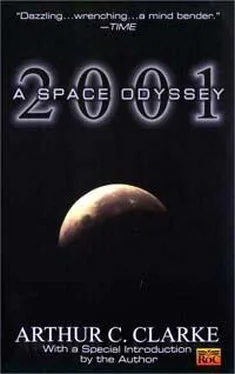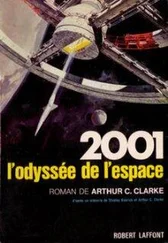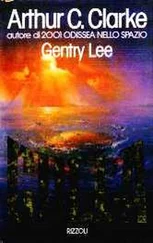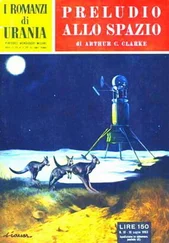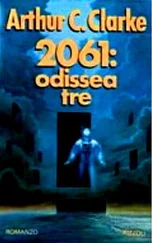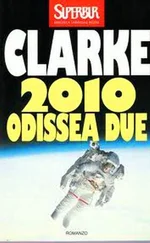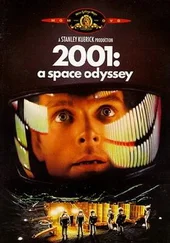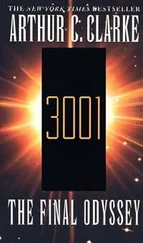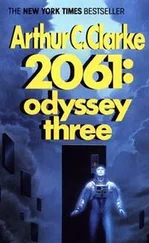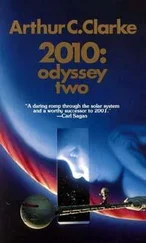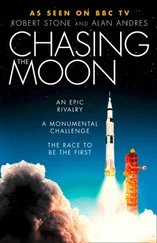Bowman was aware of some changes in his behavior patterns; it would have been absurd to expect anything else in the circumstances. He could no longer tolerate silence; except when he was sleeping, or talking over the circuit to Earth, he kept the ship's sound system running at almost painful loudness.
At first, needing the companionship of the human voice, he had listened to classical plays – especially the works of Shaw, Ibsen, and Shakespeare – or poetry readings from Discovery's enormous library of recorded sounds. The problems they dealt with, however, seemed so remote, or so easily resolved with a little common sense, that after a while he lost patience with them.
So he switched to opera – usually in Italian or German, so that he was not distracted even by the minimal intellectual content that most operas contained. This phase lasted for two weeks before he realized that the sound of all these superbly trained voices was only exacerbating his loneliness. But what finally ended this cycle was Verdi's Requiem Mass, which he had never heard performed on Earth. The "Dies Irae," roaring with ominous appropriateness through the empty ship, left him completely shattered; and when the trumpets of Doomsday echoed from the heavens, he could endure no more.
Thereafter, he played only instrumental music. He started with the romantic composers, but shed them one by one as their emotional outpourings became too oppressive. Sibelius, Tchaikovsky, Berlioz, lasted a few weeks, Beethoven rather longer. He finally found peace, as so many others had done, in the abstract architecture of Bach, occasionally ornamented with Mozart.
And so Discovery drove on toward Saturn, as often as not pulsating with the cool music of the harpsichord, the frozen thoughts of a brain that had been dust for twice a hundred years.
Even from its present ten million miles, Saturn already appeared larger than the Moon as seen from Earth. To the naked eye it was a glorious spectacle; through the telescope, it was unbelievable.
The body of the planet might have been mistaken for Jupiter in one of his quieter moods. There were the same bands of cloud – though paler and less distinct than on that slightly larger world – and the same continent-sized disturbances moving slowly across the atmosphere. However, there was one striking difference between the two planets; even at a glance, it was obvious that Saturn was not spherical. It was so flattened at the poles that it sometimes gave the impression of slight deformity.
But the glory of the rings continually drew Bowman's eye away from the planet; in their complexity of detail, and delicacy of shading, they were a universe in themselves. In addition to the great main gap between the inner and outer rings, there were at least fifty other subdivisions or boundaries, where there were distinct changes in the brightness of the planet's gigantic halo. It was as if Saturn was surrounded by scores of concentric hoops, all touching each other, all so flat that they might have been cut from the thinnest possible paper. The system of the rings looked like some delicate work of art, or a fragile toy to be admired but never touched. By no effort of the will could Bowman really appreciate its true scale, and convince himself that the whole planet Earth, if set down here, would look like a ball bearing rolling round the rim of a dinner plate.
Sometimes a star would drift behind the rings, losing only a little of its brilliancy as it did so. It would continue to shine through their translucent material – though often it would twinkle slightly as some larger fragment of orbiting debris eclipsed it.
For the rings, as had been known since the nineteenth century, were not solid: that was a mechanical impossibility. They consisted of countless myriads of fragments – perhaps the remains of a moon that had come too close and had been torn to pieces by the great planet's tidal pull. Whatever their origin, the human race was fortunate to have seen such a wonder; it could exist for only a brief moment of time in the history of the Solar System.
As long ago as 1945, a British astronomer had pointed out that the rings were ephemeral; gravitational forces were at work which would soon destroy them. Taking this argument backward in time, it therefore followed that they had been created only recently – a mere two or three million years ago.
But no one had ever given the slightest thought to the curious coincidence that the rings of Saturn had been born at the same time as the human race.
Discovery was now deep into the wide-ranging system of moons, and the great planet itself was less than a day ahead. The ship had long since passed the boundary set by outermost Phoebe, moving backward in a wildly eccentric orbit eight million miles from its primary. Ahead of it now lay Japetus, Hyperion, Titan, Rhea, Dione, Tethys, Enceladus, Mimas, Janus – and the rings themselves. All the satellites showed a maze of surface detail in the telescope, and Bowman had relayed back to Earth as many photographs as he could take. Titan alone – three thousand miles in diameter, and as large as the planet Mercury – would occupy a survey team for months; he could give it, and all its cold companions, only the briefest of glances. There was no need for more; already he was quite certain that Japetus was indeed his goal.
All the other satellites were pitted by occasional meteor craters – though these were much fewer than on Mars – and showed apparently random patterns of light and shade, with here and there a few bright spots that were probably patches of frozen gas. Japetus alone possessed a distinctive geography, and a very strange one indeed.
One hemisphere of the satellite, which, like its companions, turned the same face always toward Saturn, was extremely dark, and showed very little surface detail. In complete contrast, the other was dominated by a brilliant white oval, about four hundred miles long and two hundred wide. At the moment, only part of this striking formation was in daylight, but the reason for Japetus's extraordinary variations in brilliance was now quite obvious. On the western side of the moon's orbit, the bright ellipse was presented toward the Sun – and the Earth. On the eastern phase, the patch was turned away, and only the poorly reflecting hemisphere could be observed.
The great ellipse was perfectly symmetrical, straddling the equator of Japetus with its major axis pointing toward the poles; and it was so sharp-edged that it almost looked as if someone had carefully painted a huge white oval on the face of the little moon. It was completely flat, and Bowman wondered if it could be a lake of frozen liquid – though that would hardly account for its startlingly artificial appearance.
But he had little time to study Japetus on his way into the heart of the Saturnian system, for the climax of the voyage – Discovery's last perturbation maneuver – was rapidly approaching. In the Jupiter fly-by, the ship had used the gravitational field of the planet to increase her velocity. Now she must do the reverse; she had to lose as much speed as possible, lest she escape from the Solar System and fly on to the stars. Her present course was one designed to trap her, so that she would become another moon of Saturn, shuttling back and forth along a narrow, two-million-mile-long ellipse. At its near point it would almost graze the planet; at its far one, it would touch the orbit of Japetus.
The computers back on Earth, though their information was always three hours late, had assured Bowman that everything was in order. Velocity and altitude were correct; there was nothing more to be done, until the moment of closest approach.
The immense system of rings now spanned the sky, and already the ship was passing over its outermost edge. As he looked down upon them from a height of some ten thousand miles, Bowman could see through the telescope that the rings were made largely of ice, glittering and scintillating in the light of the Sun. He might have been flying over a snowstorm that occasionally cleared to reveal, where the ground should have been, baffling glimpses of night and stars.
Читать дальше
